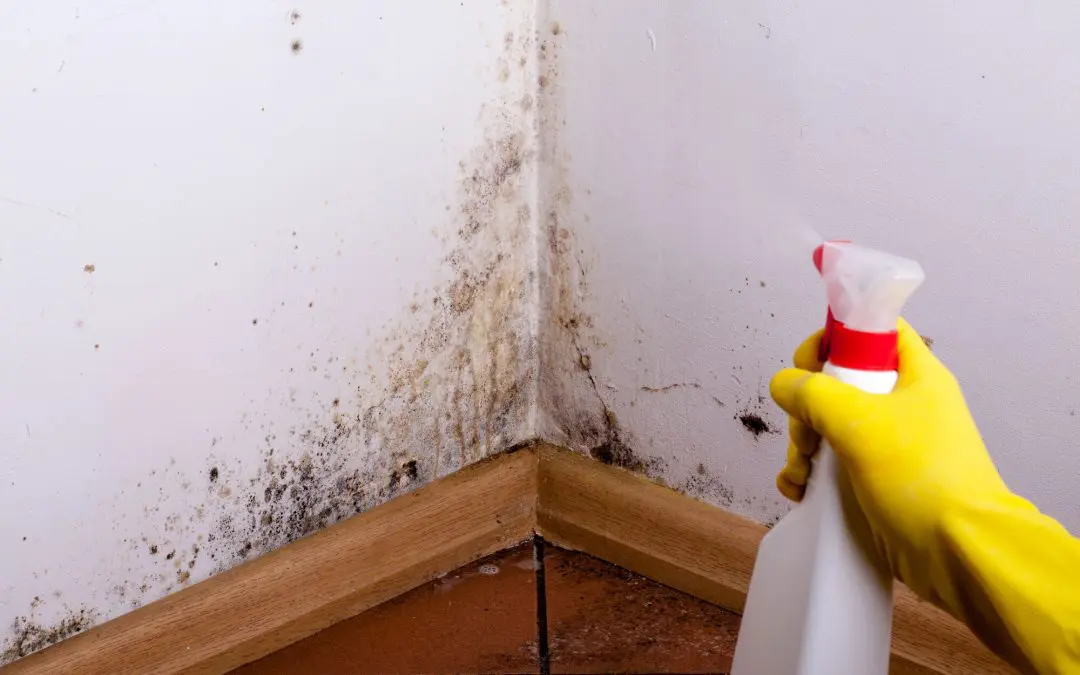Mold in the home is more than an eyesore—it poses risks to both your property and your health. It tends to show up in damp, poorly ventilated areas like bathrooms, basements, attics, or anywhere water damage has occurred. If not addressed properly, mold can spread quickly, damage surfaces, and even lead to respiratory issues and allergic reactions. Fortunately, if you catch it early, you can get rid of mold safely and effectively. The key is understanding what causes it, how to clean it up, and what steps to take to keep it from coming back.
Why Mold Grows Indoors
Mold needs just three things to grow: moisture, organic material (like wood, drywall, or fabric), and the right temperature. Most homes have plenty of materials mold can feed on—so moisture is typically the missing piece. Once water enters the picture—whether through a leak, high humidity, or poor ventilation—mold can begin to form within 24 to 48 hours.
Some signs you might have a mold issue include dark or discolored patches on walls or ceilings, a persistent musty smell, or worsening allergy-like symptoms in certain parts of the home. If you notice any of these, it’s worth taking a closer look.
How to Get Rid of Mold Safely
If the mold-affected area is relatively small—under about 10 square feet—you can likely handle the cleanup yourself. The first step is to find and fix the source of the moisture. If you don’t solve the underlying issue, the mold will return no matter how thoroughly you clean.
Before you start, put on protective gear like gloves, a mask, and eye protection. Mold spores can be irritating, especially if you have allergies or respiratory issues.
For non-porous surfaces like tile, glass, or metal, a simple mixture of detergent and water usually does the trick. Scrub the surface thoroughly, rinse with clean water, and dry the area completely. Make sure the space is well-ventilated while you work.
Removing mold from porous materials like drywall, ceiling tiles, carpet, and insulation is more difficult. These materials can absorb mold, and surface cleaning might not be enough. In many cases, it’s best to remove and replace the affected material.
Bleach is often considered a go-to solution, but it’s not always effective on porous surfaces. In many cases, it won’t penetrate deep enough to fully remove mold and can even give a false sense of success. Stick with soap and water or a mold-specific cleaning solution, and always follow label instructions.
When It’s Time to Call a Professional
While small, surface-level mold problems are usually manageable, there are situations where calling in a professional is the smarter move. If the mold covers a large area, keeps coming back, or is the result of contaminated water (like sewage), a trained mold remediation specialist should handle it.
Professionals use specialized tools and techniques to contain the affected area, safely remove contaminated materials, and ensure the problem doesn’t spread or return. They can also identify hidden mold behind walls or under flooring—something that’s easy to miss without the right equipment.
Preventing Mold from Returning
Once you’ve removed the mold, the best way to keep it from coming back is to control moisture. That means improving ventilation in key areas like bathrooms, kitchens, and laundry rooms. Use exhaust fans when cooking or showering, and open windows when the weather allows.
Keep indoor humidity under control—ideally below 50%. Use a dehumidifier in areas prone to dampness, especially basements or crawl spaces. Repair any leaks in the roof, plumbing, or foundation as soon as they’re discovered. And be sure to clean up any water damage promptly—within 24 to 48 hours whenever possible.
Regular maintenance, good airflow, and keeping an eye out for early signs of moisture issues will go a long way in keeping your home mold-free. But if you need to, you can get rid of mold easily if you act fast.
FAQs on How to Get Rid of Mold
Is mold harmful to your health?
Yes. Mold can cause allergic reactions, asthma symptoms, and irritation of the eyes, nose, and throat. People with compromised immune systems or chronic respiratory conditions may be especially sensitive.
Can you paint over mold to mitigate it?
No. Painting over mold doesn’t solve the problem—it only hides it temporarily. Mold will continue to grow underneath the paint and can eventually resurface. Always remove mold completely before painting.
What’s the difference between mold and mildew?
Mildew is a type of mold, usually lighter in color and less invasive. It often appears on surfaces like shower walls. Mold tends to be darker, thicker, and more likely to cause damage or health problems.
Do I need to test for mold?
If you can see or smell mold, testing isn’t necessary—you already know it’s there. However, if you suspect hidden mold or want to understand the type of mold you’re dealing with, professional testing can help.
How much does it cost to remove mold professionally?
The cost can vary based on the size and severity of the problem, but most homeowners can expect to pay anywhere from $500 to several thousand dollars. In larger cases or when structural repairs are needed, it could be more.
JBS Home Inspections offers home inspections in the greater Boston area. Contact us to request our services.

